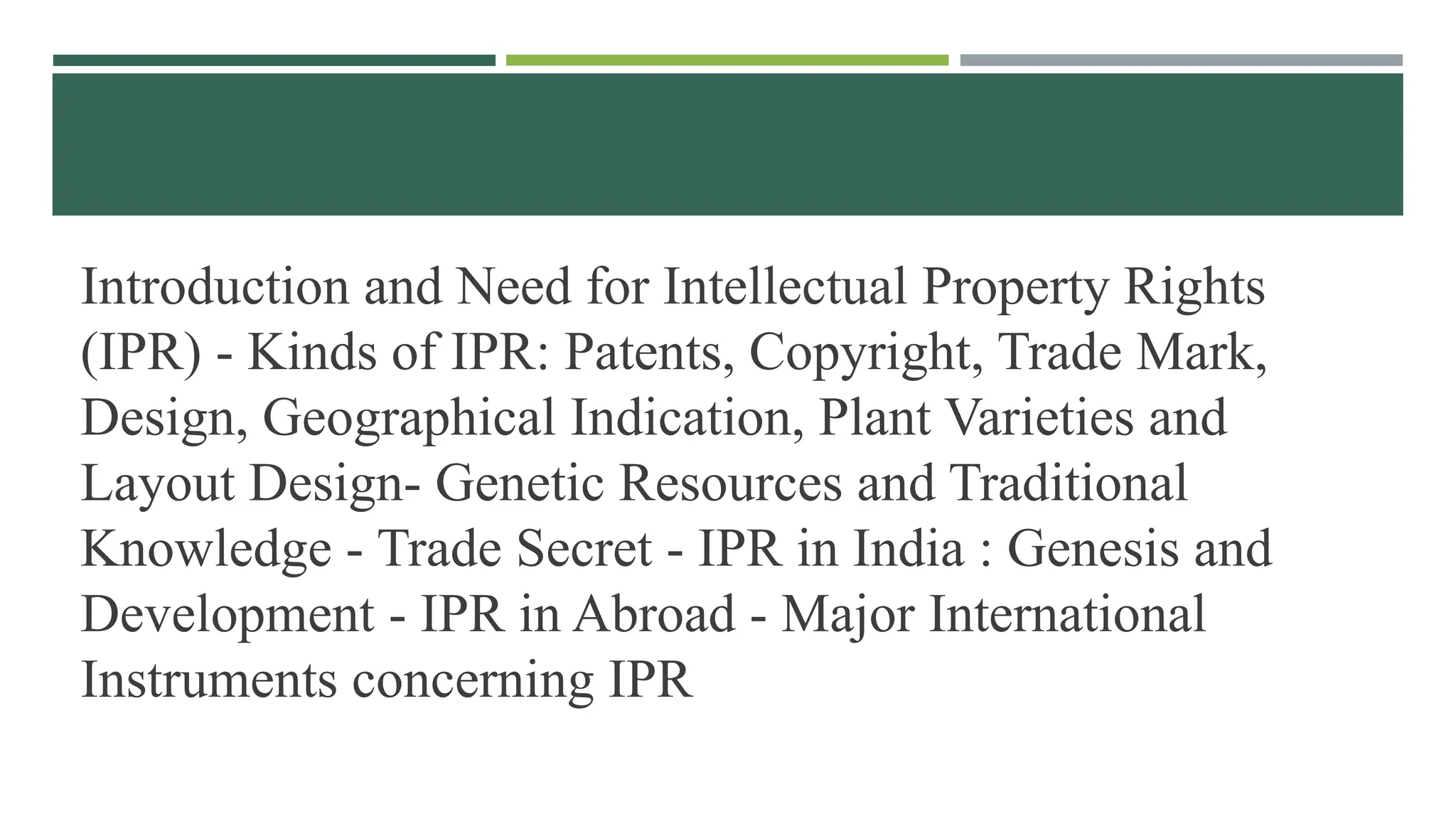The document provides an overview of intellectual property rights (IPR), detailing its types including patents, copyrights, trademarks, and trade secrets, and highlights the need for IPR in encouraging innovation and economic growth. It discusses the intersection of genetic resources and traditional knowledge and outlines the legislative frameworks and enforcement mechanisms for IPR in India and globally. Additionally, it addresses challenges faced in IPR protection and the role of international agreements in standardizing IPR regulations across countries.































